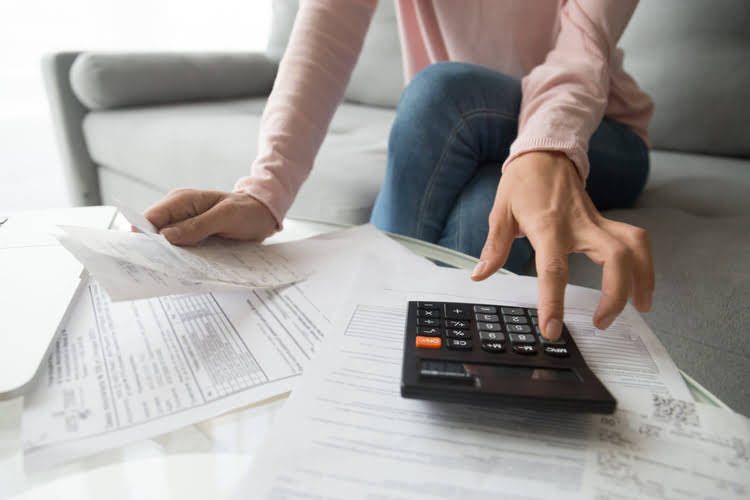Routing Number vs Account Number: What’s the Difference?

An account number, on the other hand, is used jointly with the routing number to identify a customer’s digital account. If a customer is holding dual accounts in the same bank, the bank account number will be different, while the routing number will be similar. IBAN follows a structure of checking digits to facilitate sanity check, which is all about detecting and eliminating instances of duplicated, omitted, or mistyped characters. It allows validation at the point of data entry, where a program validates the account number, number of characters, account number format, and country code. Digital account opening has made it faster and easier for consumers to acquire new accounts.
Using Other Money Transfer Services
A company selling merchandise on credit will record these sales in a Sales account and in an Accounts Receivable account. A chart of accounts will likely be as large and as complex as the company itself. An international corporation with several divisions may need thousands of accounts, whereas a small local retailer may need as few as one hundred accounts.
Chart of Accounts
You’ll need to share your bank account number to complete several types of transactions, and you can run into trouble if this unique identifier gets in the wrong hands. This can happen if someone poses as a rep for your bank or another familiar business and tricks you into providing your account information. Common options include providing your bank account details on the payee’s website, over the phone or on a payment slip that you mail.
How Do I Find My Routing Number and Account Number?
Bank account numbers play a significant role in facilitating efficient financial management for both individuals and businesses. With these unique identifiers, tracking and monitoring financial activities become effortless. In everyday transactions, such as bill payments or online purchases, the bank account number plays a crucial role. When you make a payment, whether through online banking or mobile apps, you often need to provide your bank account number to complete the transaction.
- The content within this article is meant to be used as general business guidelines and may not apply to your specific company.
- Inform them about the suspected breach and request them to freeze your account to prevent further unauthorized transactions.
- International transfers require the foreign bank’s code from the Society of Worldwide Interbank Financial Telecommunication, which serves the purpose of a routing number.
- Some of the components of the owner’s equity accounts include common stock, preferred stock, and retained earnings.
- The structure of a bank account number may differ across various financial institutions, and banks often have their own unique systems.
- The balance sheet accounts comprise assets, liabilities, and shareholders equity, and the accounts are broken down further into various subcategories.
Most bank account numbers have between 8 and 12 digits, though they can range from 5 to 17. To protect account numbers from fraud, financial institutions may also use multi-factor identification, two-step verification, and other security measures. Rather than waiting for a paper check that you have to cash, you can set up direct deposit and get money put in one or multiple bank accounts. This is a popular and convenient choice for receiving paychecks, government benefits and tax refunds. Direct deposit is also more secure since there’s no paper check for someone to potentially steal. An account number usually consists of eight to 17 digits that identify your bank account at your financial institution.

SWIFT serves as the messaging system that enables a worldwide network of financial institutions to exchange funds. It is used internationally and for money transfers that cross national borders. SWIFT codes are often used when initiating wire transfers both from another country to the U.S. and from a U.S. bank to one in another country.

This numbering system helps bookkeepers and accountants keep track of accounts along with what category they belong two. For instance, if an account’s name or description is ambiguous, the bookkeeper can simply look at the prefix to know exactly what it is. An asset would have the prefix of 1 and an expense would have a prefix of 5. This structure can avoid confusion in the bookkeeper process and ensure the proper account is selected when recording transactions. The most common type of account number is a checking account number, which identifies the owner and grants access, facilitating various forms of commercial transactions.
- Identifying a customer during a bank-related financial transaction requires two relevant pieces of data – the account number and the routing number.
- While no two banks will have the same routing number, large financial institutions can have multiple routing numbers specific to the state or location of your account.
- As you can see, each account is listed numerically in financial statement order with the number in the first column and the name or description in the second column.
- Banks often have online bill pay services you can use to set these payments up as well.
- Changes – It’s inevitable that you will need to add accounts to your chart in the future, but don’t drastically change the numbering structure and total number of accounts in the future.
- The IBAN serves as a unified identification system for bank accounts, regardless of the country or financial institution.
- You can find your account and routing numbers at the bottom left side of paper checks issued from your checking account.

Liability accounts provide a list of categories for all the debts that the business owes its creditors. Typically, liability accounts will include the word “payable” in their name and may include accounts payable, invoices payable, salaries payable, interest payable, etc. Each asset account can be numbered in a sequence such as 1000, 1020, 1040, 1060, etc. The numbering follows the traditional format the number assigned to an account of the balance sheet by starting with the current assets, followed by the fixed assets. Groups of numbers are assigned to each of the five main categories, while blank numbers are left at the end to allow for additional accounts to be added in the future. Also, the numbering should be consistent to make it easier for management to roll up information of the company from one period to the next.
What is a Bank Account Number?
- When you list and number your types of accounts, your current assets come first.
- Also, it’s important to periodically look through the chart and consolidate duplicate accounts.
- Your financial institution may have different ABA routing numbers for some regions.
- Anyone can locate a bank’s routing number, but your account number is unique to you, so it is important to guard it, just as you would your Social Security number or PIN code.
- The consistent structure also reduces the chances of human error in processing international transactions, reducing the risk of misdirected funds.
- Your bank’s routing number and your checking account number are used when writing a check and sending or receiving an electronic funds transfer.
The smaller your operations, the smaller your chart of accounts will likely be. Making financial transactions requires your routing transit number in addition to your account number. Assigned by the American Bankers Association (ABA), a routing number has nine digits and tells which bank or credit union has the account that’s in the transaction. Your financial institution may have different ABA routing numbers for some regions. By regularly checking account statements, individuals and businesses can make informed financial decisions, plan for future expenses, and create effective budgets. Bank account numbers are unique identifiers assigned to customers when they open new accounts with banks.
